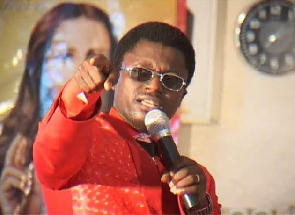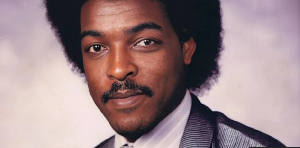Pity the youth of Ghana: their parents battle against high economic odds to see them through school and facilitate their entry into a responsible, successful adulthood. Yet when they finish school, they are less likely to be employed than other jobseekers in the population.
Even those that find work don’t have it rosy: under current conditions, it is hard for them to acquire the normal comforts: a nice rented apartment furnished with the basic necessities, a bike or car, and enough savings to further their education or meet unforeseen expenditures.
As the world observed International Youth Day on Tuesday, this paper decided to turn attention to this critical sub-group of the population that is often neglected in public discourse.
According to the National Youth Policy, the youth are those aged between 15 and 35. The period of youth thus starts from when a person enters senior high school and probably ends during the first few years of marriage. From the 2010 national census, 35 percent of the population fall in the youth category.
Motley challenges confront the youth, and it would require several pages of text to explore them all.The present grim economic conditions have however accentuated two of these: poor education and a lack of jobs or stable income.
An emerging metaphor of the problems in education is the protracted strike by polytechnic teachers. The government, cash-strapped because of past fiscal indiscipline, has not always been able to settle its bills with state-employed teachers, triggering strikes that disrupt school calendars and reduce contact hours with students.
Meanwhile, infrastructure development in the government-dominated secondary and post-secondary education sector has not kept pace with demand for education, undermining the quality of learning and assessment. Schools’ curricula are also skewed towards arts education, with insufficient scientists and technicians being trained for health, industry and manufacturing.
The fallout of these problems is poorly educated graduates who cannot find decent work in an already tight labour market. Some people have the necessary skills alright, but job opportunities are not expanding in tandem with the production of graduates. According to the National Council for Tertiary Education (NCTE), 40 percent of graduates face possible unemployment unless they can create their own jobs.
President John Mahama yesterday launched his Youth Enterprise Support (YES) initiative to help young people start their own companies and realise their business ideas. A seed fund of GH¢10million has been set aside to implement the initiative, the President said. There’s no doubt that if YES is well-managed, it could turn many young people’s dreams into reality.
But the President and his government need to do more – and quickly. First, he needs to fix the country’s dire finances. The reasons to do this are several. First, high budget deficits, which raise interest rates, mean government crowds-out young people seeking financial resources to develop their innovative ideas.
If the government trims the deficit and stabilises the economy, young people would be able to raise capital more cheaply to do business. Those in employment with aspirations to advance in their careers and live more comfortably would also be able to use bank credit to pursue further education, or acquire a home or car.
A government with sound finances also has better capacity to undertake public investment in social and economic infrastructure, which makes doing business easier by lowering costs and boosting efficiency. In short, programmes like YES would fare better in an environment where the state’s facilitative role in the business sector is not encumbered by deep fiscal holes.
To tackle the epidemic of youth unemployment and underemployment, there are three main solutions: diversifying economic growth, overhauling education, and improving the labour market.
Ghana’s lack of economic diversification is due to the neglect of manufacturing. The country simply does not make enough things of its own, despite history and evidence showing unequivocally that making things employs people.
Making things sharpens skills, causes technology to be created and developed, and ensures the transfer of valuable learning and skills to people coming up the ladder. The President must use a clever combination of state support and market-oriented policies to revamp manufacturing to spur job-creation.
A few years ago, a needless debate was had about the duration of senior high school education. The truth is that the number of years people spend in school is less important than the content of what they learn.
Industries all the time bemoan the gap between the world of education and the world of work, which makes finding the right people to employ difficult.
The government must push schools to forge closer ties with businesses and it should upgrade vocational and technical education by resourcing the institutions adequately – instead of letting them continually play second fiddle to regular education.
The study of science and technology must also be expanded and subsidised. The current situation whereby the country deliberately trains fewer doctors than it needs is simply self-inflicted harm.
Companies, too, need to be prodded with incentives to grow and employ more people. They don’t only need enabling policies to prosper, but they need those policies to be certain and consistent. If the government says it wants firms to borrow more cheaply but causes interest rates to rise through its own inordinate borrowing, it’s not being consistent and trustworthy.
Yet the very government the youth need to make the maximum use of their talents is one that is consistent and trustworthy. So the starting point to deepen engagement with the youth is for the President to show he can be trusted in all that he says.
Business News of Thursday, 14 August 2014
Source: B&FT

















